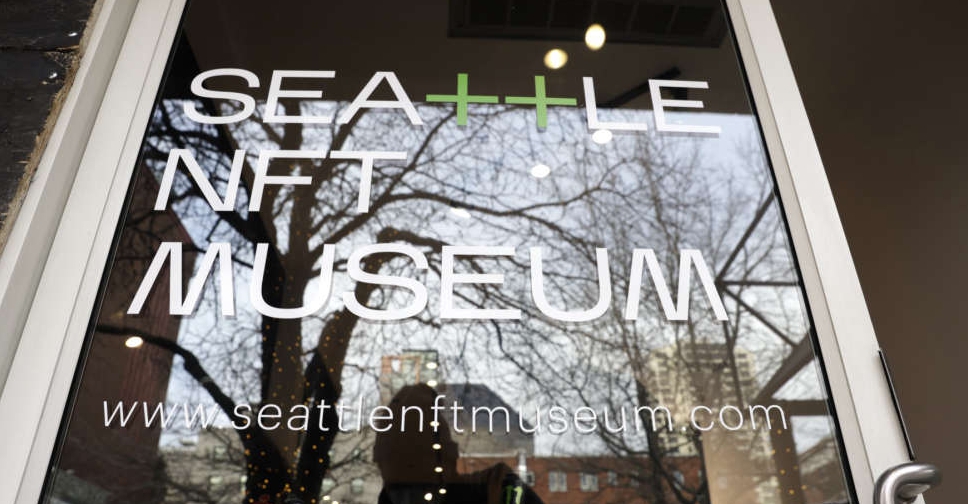
The world's first permanent NFT art museum has opened in Seattle, aiming to "pull back the curtain" on blockchain-based digital art.
Non-fungible tokens (NFTs) are a type of digital asset that has exploded in popularity recently, with NFT artworks selling for millions of dollars. NFTs exist on a blockchain, a record of transactions kept on networked computers.
The museum opened its doors on January 14 and has been providing an outlet for artists, creators, and collectors to display their NFTs in a physical setting while aiming to educate the public about this relatively new market for digital art.
"We really realised the impact of being able to look at this type of art in a way where you actually slow down, you see all the details," said Jennifer Wong, a co-founder and curator at Seattle NFT Museum.
Local digital artist Maksim Surguy attended the opening of the museum's 'Climate Conversation' exhibition on April 16, which features his designs that are sold as NFTs online but can also be printed in physical form.
"Previously, if you make a digital artwork or physical artwork, there were a lot of limitations about who can see the artwork or how they can own it," said Surguy, who works in Seattle's tech industry and ventured into crypto-based art a year and a half ago.
According to a March report from Ireland-based Research and Markets firm, the global NFT market is expected to grow to over $21 billion (AED 77 billion) in 2022.
"An NFT is really just a contract that signifies the ownership of an asset of some kind," said Peter Hamilton, who co-founded the museum. "These tokens... are basically a contract that says this serial number belongs to this piece of art, and if you own this token, you are the rightful owner."
The museum has programming planned throughout the year.
"I can't emphasise enough how important the educational part of this museum is," said Hamilton. "We're trying to onboard folks and help them see what the value of NFTs are and help people pull back the curtain a little bit on what blockchain is and what its utility is."




 'The Simpsons,' 'Family Guy' renewed for four seasons at Fox
'The Simpsons,' 'Family Guy' renewed for four seasons at Fox
 Actor Val Kilmer, star of 'Batman Forever', dies at 65, NYT reports
Actor Val Kilmer, star of 'Batman Forever', dies at 65, NYT reports
 Ghibli effect: ChatGPT usage hits record after rollout of viral feature
Ghibli effect: ChatGPT usage hits record after rollout of viral feature
 Sony reveals cast for four 'bingeable' movies about The Beatles
Sony reveals cast for four 'bingeable' movies about The Beatles
 Momoa and Black create comedy in game adaptation 'A Minecraft Movie'
Momoa and Black create comedy in game adaptation 'A Minecraft Movie'
 Star Wars 'bowcaster' and medal fetch over $1m at auction
Star Wars 'bowcaster' and medal fetch over $1m at auction




